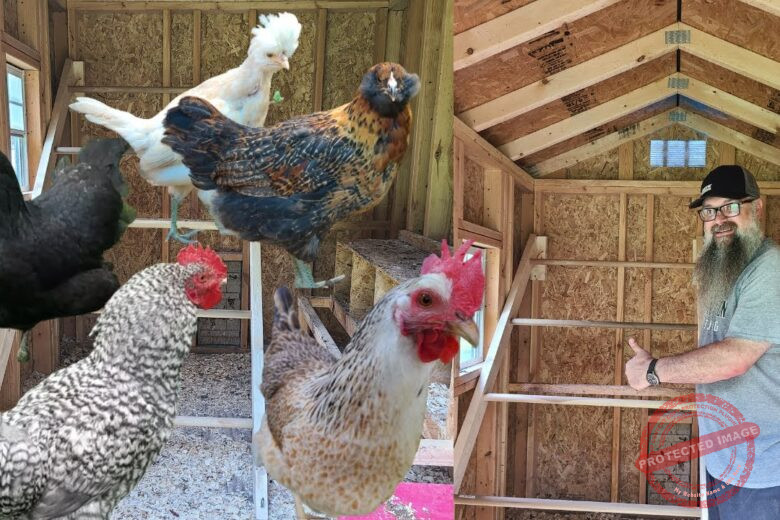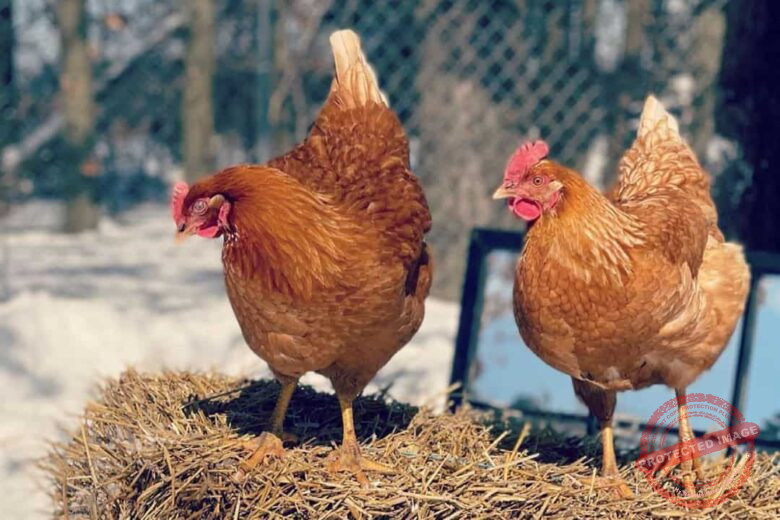If you’ve been hanging around farm groups online lately or scrolling through poultry pages, you’ve probably seen the buzz around Cream Legbar chickens. Folks talk about their sky-blue eggs like they’re some kind of backyard treasure. And honestly? They kind of are. These birds have a charm to them—beautiful crests, calm personalities, and that rare egg color that makes breakfast feel a bit special. But before you hit that “buy” button or drive out to a breeder, there are a few things you should really know about their care.
I still remember the first time I saw a Cream Legbar in person. It was at a small farm swap on the edge of town. A woman had a crate full of sleek, golden-gray birds with those funny little crests that looked like they’d just come from the hairdresser. She cracked open a carton to show their blue eggs, and the crowd literally gasped. I thought, “Yep, those are coming home with me.” But like every new bird I’ve added to my flock, the learning curve was real. These birds have their quirks, and if you’re not ready for them, they’ll teach you the hard way.
So, if you’re wondering whether a Cream Legbar (or as some folks casually say, “cream leg”) is the right fit for your flock, let’s dig into what life with them is really like—from their care, temperament, and feeding, right down to how to keep them happy and laying strong.
What Makes Cream Legbar Chickens So Special?
Let’s start with the basics: the Cream Legbar is not your average barnyard chicken. These birds were first bred in England around the 1930s, which makes them an old heritage breed with a modern twist. Their creators wanted chickens that were both beautiful and practical—meaning they’d lay lots of eggs, be easy to sex as chicks (you can tell males from females by color), and fit well on small farms.
But let’s be real. Most of us are drawn to them for those blue eggs. The color doesn’t fade like it does with some breeds, and every egg looks like it’s been hand-dyed for Easter. You can expect around 180–220 eggs per year from a healthy hen, which isn’t bad at all.
And personality? They’re alert but not flighty, friendly but not clingy. My Cream Legbar hen, Daisy, follows me around the yard but keeps her distance when I’m hauling feed buckets—smart little lady.
Are Cream Legbars Good for Beginners?
Yes—and no.
If you’ve already raised a few chickens before, you’ll find them easy enough. They’re pretty hardy, handle cold weather well, and aren’t too fussy with feed. But if this is your very first rodeo, you’ll need to give them some extra attention at first.
Why? Because these birds are active. Cream Legs love to forage. They don’t like being confined for too long and might start pacing or pecking at others if they feel trapped. If you’ve got space—say, a decent-sized backyard or a small pasture—they’ll reward you with better health and more eggs.
If you plan to keep them in a smaller run, just make sure you give them enrichment—some hanging veggies, logs to hop on, or even old mirrors (they love admiring themselves, believe it or not!).
Housing Tips: What Works Best for Cream Legbars
When I first brought home my trio of Cream Legs, I made one big mistake: I underestimated their curiosity. Within a week, they figured out how to open the coop latch. The next morning, I found them scratching in my garden bed like they owned the place. Lesson learned.
Here’s what works best for housing them:
-
Give them height. Cream Legbars love to roost high. Provide perches that are a few feet off the ground, and they’ll naturally gravitate there.
-
Keep it airy. They don’t do well in damp or stuffy spaces. Make sure your coop has solid ventilation, especially in humid climates.
-
Predator-proof it. These chickens are fast but not invincible. Use strong wire mesh (not chicken wire) and secure latches.
-
Dust baths are a must. Add a box with sand, wood ash, and diatomaceous earth to help them stay clean and mite-free.
A happy Cream Legbar is a busy one. Give them space and small challenges, and they’ll thrive.
Feeding Cream Legbar Chickens
Cream Legs aren’t picky eaters, but that doesn’t mean they can live on scraps alone. A good-quality layer feed is essential, ideally with 16–18% protein. Add crushed oyster shell or calcium grit for chickens to help with eggshell strength. Their beautiful blue eggs deserve a solid foundation, right?
They love greens, mealworms, and the occasional corn treat—but don’t overdo the corn in hot weather. If you let them free-range, they’ll find plenty of bugs and plants to munch on. You’ll even notice a deeper egg yolk color when they’re foraging regularly.
And yes, they’ll absolutely raid your vegetable patch if given the chance. Mine once went to town on my lettuce bed, leaving me with half-eaten heads and some very smug-looking hens.
Health and Common Issues
Cream Legbars are generally healthy birds, but like all chickens, they need a bit of preventive care. Watch for these common issues:
-
Mites and lice: These are common in birds with crests. Check under the crest feathers weekly.
-
Scaly leg mites: Keep perches clean and dusted with diatomaceous earth.
-
Respiratory issues: Make sure your coop isn’t drafty but still well-ventilated.
Adding a bit of apple cider vinegar to their water once a week can help maintain gut health. It’s a trick that’s worked wonders for my flock.
Vaccines aren’t always necessary, but if you’re buying chicks from a hatchery, ask if they’ve been vaccinated for Marek’s disease. It’s one of those “better safe than sorry” situations.
Temperament and Flock Compatibility
One thing I love about my Cream Legs is their personality. They’re confident, curious, and polite with other chickens. But there’s always that one hen who thinks she’s boss, right? Cream Legs won’t usually start trouble, but they’ll stand their ground if needed.
They mix well with other gentle breeds like Buff Orpingtons, Sussex, or Australorps. Avoid pairing them with overly dominant birds, especially aggressive roosters.
They’re not loud compared to other layers, but when they do lay that first blue egg, you’ll hear about it. Their “egg song” is proud and unapologetic—like a victory announcement to the world.
Egg Production: What to Expect
If you’re buying Cream Legbars for their egg color (and let’s be honest, that’s a big reason most of us do), you’re in for a treat. These hens lay about 4–5 eggs per week during their prime laying season.
Their eggs have a light blue shell that doesn’t fade much over time, and the inside yolk is rich and golden. Customers at farmers’ markets love them. I’ve had folks come back just to say, “Those blue eggs made my breakfast feel fancy.”
They start laying around 5–6 months of age, depending on your climate and nutrition. Give them enough daylight, good feed, and calm living conditions, and you’ll have a steady supply.
How to Identify a True Cream Legbar
Because they’ve become so popular, there’s been some confusion around “fake” Cream Legbars or mixed breeds. If you’re serious about rooster or cream leg identification, here’s what to look for:
-
Hens: Grayish body with cream-colored hackles and that signature small crest on their heads.
-
Roosters: More colorful—bluish-gray with cream hackles and saddle feathers.
-
Eggs: Always blue or slightly greenish-blue.
-
Temperament: Alert, upright stance, and curious behavior.
When buying from a breeder, always ask about their lineage and avoid “olive eggers” being sold as Cream Legbars. They’re beautiful too, but not the same breed.
How to Introduce Cream Legbars to Your Existing Flock
Adding new birds to an established flock can be tricky. Cream Legs are social but smart—they’ll scope out the pecking order before jumping in. Here’s what works best for me:
-
Quarantine new birds for at least 10–14 days to check for parasites or illness.
-
Let them see but not touch. Use a temporary pen beside your main coop.
-
Introduce during free-range time. The open space helps prevent fighting.
-
Keep an eye on feed bowls. Food aggression is common during the first week.
Once they’ve sorted out the pecking order, they’ll settle peacefully. My flock did within a week, and now they dust bathe together like old friends.
Frequently Asked Questions About Cream Legbar Care
Q: Do Cream Legbars go broody?
Not often. They’re more focused on laying than sitting. If you want chicks, you’ll likely need an incubator or a broody hen from another breed.
Q: How long do Cream Legbars live?
Usually 5–7 years, but some well-cared-for hens live longer.
Q: Can Cream Legbars handle heat?
They do better in cooler climates but can adapt if they have shade, plenty of water, and ventilation.
Q: Are Cream Legbar roosters aggressive?
Most are mild-mannered, but temperament varies. Always handle roosters calmly and confidently.
Q: Where can I buy Cream Legbars?
Look for local breeders or trusted hatcheries like Meyer Hatchery, Cackle Hatchery, or My Pet Chicken. Buying locally can also help you inspect their health before committing.
Quick “How-To” Care Tips for Busy Farmers
How to Keep Cream Legbars Healthy:
Feed them balanced layer feed, add grit, and let them free-range when possible. Keep water clean and replace it daily.
How to Keep Their Crests Clean:
Gently wipe the crest with a damp cloth if it gets dirty. Avoid soaking them, especially in cold weather.
How to Boost Egg Production Naturally:
Provide 14–16 hours of light, fresh greens, and a stress-free coop.
How to Bond with Them:
Spend time in the yard while they forage. Toss them small treats—like mealworms or cracked corn—and talk to them softly. They’ll start to recognize your voice.
A Day in the Life with Cream Legbars
Every morning, my Cream Legs are the first to greet me. They stand by the gate, waiting for me to open it like it’s a grand event. Daisy, my favorite hen, always hops up onto the bucket beside me as I scoop feed. She doesn’t beg for food—she just watches, curious about what I’m doing. When I refill the waterer, she dips her beak in before anyone else. It’s small routines like that which make keeping these birds so rewarding.
Owning Cream Legbars isn’t just about getting blue eggs—it’s about enjoying the personality and rhythm they bring to your farm.
Final Thoughts: Are Cream Legbars Right for You?
If you want a breed that’s beautiful, productive, and relatively easygoing, the Cream Legbar might just be your match. They’re smart, curious, and full of character. But they’re also active birds that need space and a bit of attention to thrive. They’ll reward you with those iconic blue eggs and a calm, pleasant presence around your yard.
At the end of the day, chickens like these remind us why we farm in the first place—not just for the eggs, but for the joy of caring for something simple and honest. So, what do you think—are you ready to bring a few Cream Legbars into your flock?



